It started with what sounded like the resounding crack of a high powered rifle as the base of the tree snapped to pieces like kindling. I didn’t get to see which way the tree was going to fall because the sound of it breaking was enough to send my horse in a wild and blind gallop through the thick timber surrounding the big tree.
The crashing and the raining of broken limbs added to my mare’s frenzy. I just tucked my head into the hair of her mane and held on with all my might, hoping she couldn’t knock my head on low hanging branches as we were racing wildly through dense fir forest along the Sky Island Fork of Hat Creek.
In another second, the tree slammed into the ground, and all was still. I brought my Ginger down to a trot, and wheeled around instinctively to look for 14 year old daughter Emily. Her mount, Georgie, had started running with the crash as well, but all he did was lope a few steps to safety. He was a pretty sanguine dude, after all. He reached down to tear a mouthful of wheatgrass. “Just another day in paradise,” He seemed to say. My mare, meanwhile, was still pawing the ground and heaving with fresh memory of her brush with death.
We rode slowly back up to where the tree fell. The splintered log on the ground wasn’t huge, only about 3 feet around, not as big as some of the old-growth fir trees that grew here in the draw bottom. Some of those pushed 12 feet in circumference. But its fall was totally unexpected. When the wind blows in the forest, I’m ready for anything.
But it was completely still, a lovely July day on horseback looking for stray cows. It was just the exact second in a billion when the rotting and dead fiber of fatigued wood grew weary of bearing up the thousands of pounds that comprised the whole of the lifeless snag. They gave way after holding up the tree for over a hundred years, and we just happened to be there.
I thought of that old existentialist adage that goes something like: “If a tree falls in the forest, and no-one is there to hear it, is there any sound?” I testify that in my case, there was sound. It was a small chance on a small chance that we by happenstance rode there. My guess is that less than 50 other people had been at that exact place over the last 1000 years, and it was mostly Alderspringers. We were probably 40 miles from anyone else, not even on an animal trail. It was truly in the middle of nowhere.
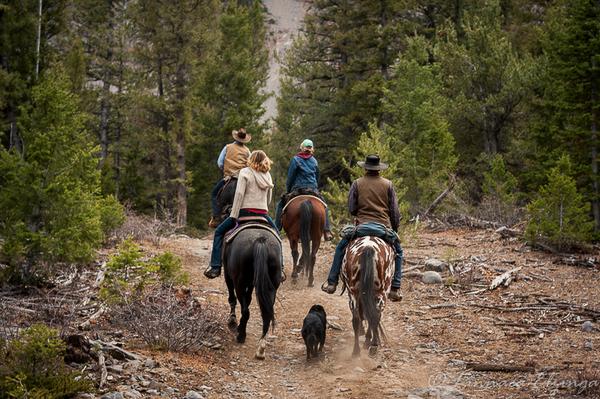
Emily and I pondered the down tree as its still swirling dust illuminated dancing shafts of sunlight that beamed down on the forest floor. I could hear the creek bubbling beyond. The birds had begun singing again after their temporary silence after the crash. They too, were witness; I’m not sure they counted as listeners on the tree falling according to our sage existential philospher. They count in my reality.
I was just glad to have my head still attached to torso, and that Emily’s Georgie was chill. When such things happen, I always take a minute to ponder what could have been and what should have been, and move on. Only a fool would ignore a brush with disaster and just keep riding. But often there’s really nothing you could have done different; then, you go back to the work at hand.
Because in ranching, there is always that: the work at hand. There is no catching up. Animals, wild country, wild animals and weather always of a way of changing the best laid plans. The work of husbandry is actually creating “managed chaos” in concert with the wild diversity and exuberance of nature.
Think about it. Here is a tree that has been standing for probably a hundred years. There was no wind, no snow load, no predictor or prompt for the tree to fall. Sure, there is probably a way to measure that the tree is weakening, maybe even measure enough variables to create a model that predicts when the tree will fall.
But then there are all those pesky variables we humans can’t predict. Will there be a microburst (our Idaho version of a tornado but much smaller) that takes the tree down? Totally unpredictable. How about an unusually heavy snow load? Pretty unpredictable. We humans call it chaos, and consider it “bad.” But nature links all this marvelous complexity into a dance that is incomprehensible, but not truly chaotic, a dance driven ultimately by the energy of our sun.
Agriculturalists the world over attempt to eliminate chaos; they work tirelessly to create controlled infrastructure and sterile environments around animals, which tend toward diversity and wildness, and from our limited human perspective, chaos. Hence antibiotics in feedlots, dairy cows indoors, chickens in cages over concrete.
The tradeoffs of a very efficient controlled system are environmental costs, animal welfare costs, and ultimately, human costs in the reduction of nutrition density and diversity in our food. Food loses flavor and health benefits. Animals, who thrive on choice and balancing their own nutritional needs for optimal health, are force-fed rations that white coated humans prescribe.
“‹”‹”‹”‹”‹”‹”‹
We’ve been doing this grass fed and organic thing a long time, but we find more and more that we let the cattle do what they want instead of us making them do what we want. It’s what has called us backwards in time to horseback on the range and to diverse organic pastures on our home ranch. We are convinced that our beeves are better for it, and that the beef they produce is better too. Now, in our third year of herding, we are finding the landscape is better for it as well. But there’s more.
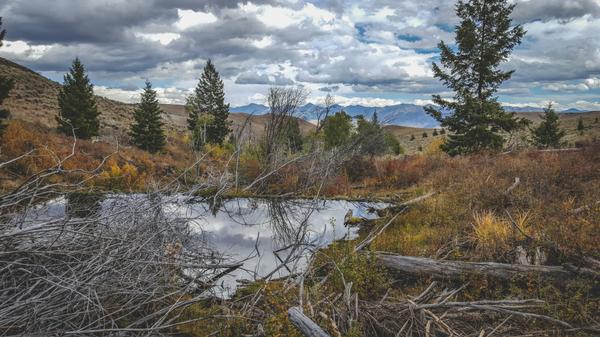
It’s about people, the people that work here, especially the summer crew. Because Caryl and I are beginning to understand that the wild diversity of Alderspring includes the experiences we send with our employees when they leave for their next life adventure.
It’s hiring time for the range cowhand crew. We’re looking for a few good men and women who are willing to embrace cattle chaos, dust and dirt. They learn to do and make do. They attempt to acknowledge and revel in the wild country’s diversity, and in doing it, at the end of the grass season, they take home a gift that they’ll have their entire lives. They’ll always carry it with them, and they’ll pull it out at the most unexpected times. It’ll be like that tree falling in the forest: they’ll be hit with that memory, and the sound and dust will fill their minds like it was yesterday.
I’m talking about story. It will color their life. It will temper their reality so much that that they’ll function differently. It will be because they have witnessed the unexpected and the uncontrolled, as it can often be on the range, and they’ve dug down deep in themselves to adapt and roll with the wildness.
Nature is content, and even happy in its chaotic exuberance. We are seeing creek side aspen forests release under our intensive herding regime; by my reckoning, this is the first time in over 100 years that cows nibbling those tender aspen shoots was intentionally halted. It allowed these long awaiting aspens to finally grow and get a start to becoming a tree through our careful stewardship herding. It’s a way to use our human controlling tendencies to work with nature instead of against it. As a result, we see new forests commencing and streambanks healing with a bountiful chaos of plants.
See, it’s not only about sending these young humans home with stories of their life in interaction with that natural world; it’s also about enabling nature to tell her story of what a healthy landscape looks like. Thanks for partnering with us in our husbandry of a wild and healthy natural landscape. It’s pure chaos to some. Pure beauty to others.
I’ll take beauty, and happily walk in it.


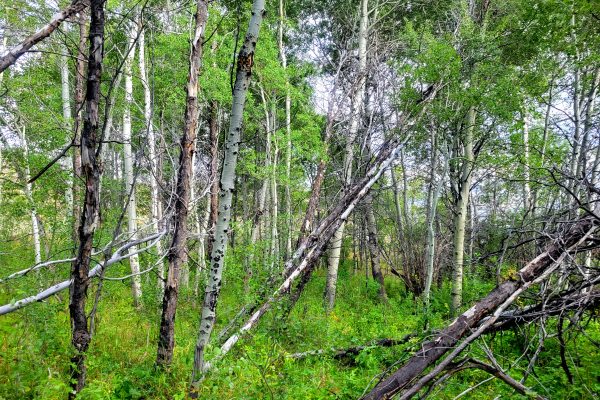
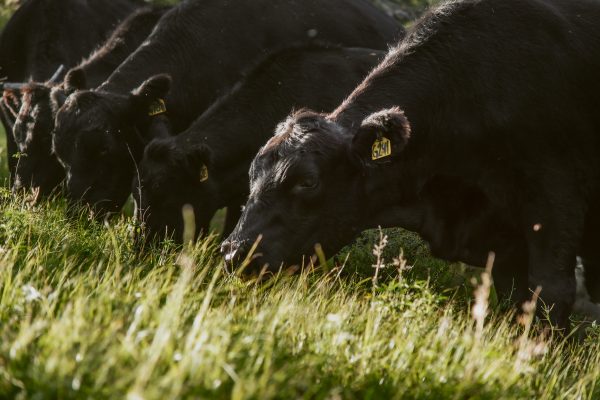
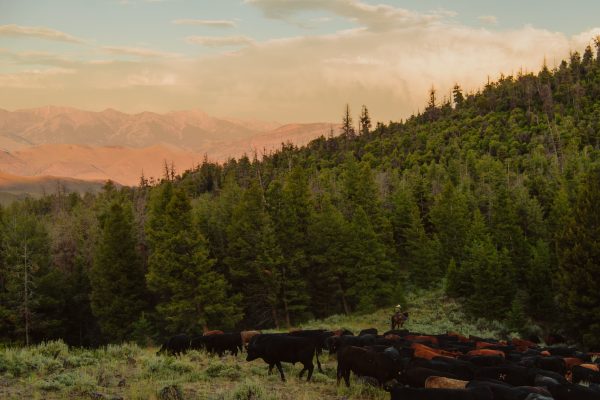
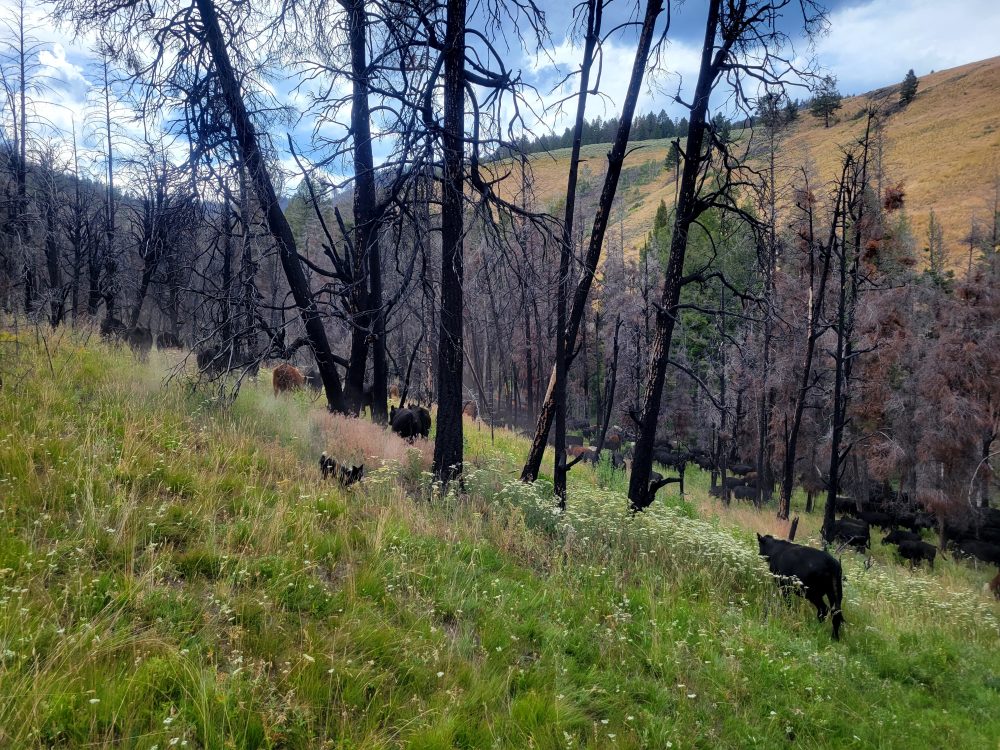

Robin Poupard
I look forward to your stories and you never disappoint! Thanks for sharing your interactions with nature. I’m not able to enjoy being out in nature much these days as I am “rehabbing” from a bout with breast cancer and all the healing therapies involved. Your stories kind of pull be into your world, and I find that really healing!